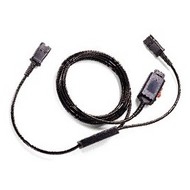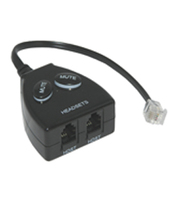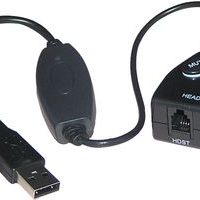Welcome to our Buyers’ Guide to headset training products. We discuss the various ways of connecting two headsets to one telephone to enable side-by-side training. Whatever brand of headsets, whether they are corded or cordless, we have a solution for you..

Headset Training
For many business and organisations telephone training is vital. For many customer service, sales and other telephone based roles, an experienced trainer will sit alongside their subject, listen in to their calls and be able to offer advice and feedback as part of the training process. Therefore in order to do this effectively you need to be able to connect both users to a single telephone.
Headset training and headset training devices are something we get asked about frequently. So we have written this guide which discusses the various options that are available to help answer your questions.
Whichever brand of headset you have, whatever telephone system you use and whether you are connecting to a telephone or a computer, we should have an option that allows you to connect two users to a single device to enable them to train.
Quick Guide
Training Cables
A cable that connects to your bottom cord and splits into two, therefore enabling the connection of two headsets .
Training Buddy
A ‘doubler’ – a device that connects to the headset port of the phone and in turn presents two ports suitable for connecting a headset in each of the ports
Training Cords
Historically not all headsets would connect directly to a telephone, and many phones required unusual looking plugs. As a result the easiest way to enable two users to connect to a phone for training purposes was to split the cord into two at the quick disconnect. A headset is generally made up of two parts, the headset top, and the bottom cord. The part where they join together is known as the quick disconnect.
These training cables, or Y-Cords as they are generically known, fit onto the quick disconnect. They enable you to connect two users to connect their headsets for side-by-side training. The cord you would require is however, dictated by the headset brand that you use as each of the major manufacturers has their own design of quick disconnect.
The Plantronics Y-Cable is fitted with a switch that lets the person doing the training to either mute themselves, or take over and assist with the call as and when required. The Jabra Supervisor Cord also has a switchable mute switch. The Sennheiser ATC1 or ATC2 Training Cables are compatible with any corded Sennheiser headset. The ATC1 has one side permanently muted, the ATC2 has a switchable mute button. Xennex headsets have the same quick disconnect connection as Plantronics headsets. So as well as working with Xenexx headsets the Xenexx Training Cord they therefore provide a cost effective alternative to use with any Plantronics compatible headsets.
Training Buddy
More than 90% of modern phones have small clear plastic RJ9 connection and take a direct connection into a designated headset port on the phone. A headset Training Buddy; the Handset Solutions Training Adapter, is a cost effective and neat solution that just plugs directly into the headset port on your phone. It then gives you two ports for the agent and the trainer to in turn connect their headsets to the phone.
The Buddy has switchable mute toggle switches on each port so you can select which headset is muted. Alternatively you can have both ports ‘live’ so both users can conference with the 3rd Party. Because it is discreet you can therefore leave one connected permanently which enables a supervisor to connect without the need to disconnect a headset and get ‘set-up’ as they would with a Y-Cord.
Cisco handsets tend to have a reverse wired headset port, so there is a Cisco specific version of the Training Buddy for Cisco telephones. You can identify a Cisco Buddy because it has a grey inset around the RJ9 ports.
Headset Training With USB Headsets
The increased use of USB headsets presents a challenge. To the best of our knowledge there isn’t a USB Training adaptor like the Buddy that will allow you to connect two USB headsets to a single USB port on a computer. USB headsets generally don’t have a quick disconnect either and are hardwired from the USB all the way to the headset.
However, we have, of course come up with a work around that enables you to train side-by-side, even if you are using a softphone and only have a USB port to connect you headset to. The TUK USB Buddy connects to a USB-A port on your computer and then presents two RJ9 ports that you can connect two standard headsets with bottom cords to for your training. Just as with the Buddy, you have selectable mute switches on the top of each port.
Another way of setting up a training solution when you only have a USB port to work with would be to use a USB adaptor like the Plantronics DA70, Jabra Link 230 or a Handset Solutions Teams USB Cable. These options give you a quick disconnect that you can connect a Training Cord and in turn connect two headset tops.
Headset Training With Cordless Headsets
Wireless headsets are growing in popularity, but they present another challenge when it comes to training. Obviously Y-Cords are not an option for cordless headsets. In most cases however a Headset Buddy will connect into the headset port on your phone and in turn you connect the base of the wireless headset into one of the ports. This therefore leaves the other one free to connect another headset for training purposes.
Finally, some cordless headsets also have a conference features that allow you to dock another headset onto the base of the primary headset, temporarily pairing it with that base unit. We advise referring to the manual of your cordless headset to see if it supports this feature.
If you want to discuss your requirements for side-by-side training please feel free to call and speak to one of our headset experts on 01937 302302, who will be happy to assist and advise on the best solution.





